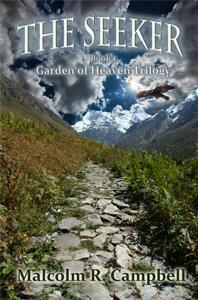Malcolm R. Campbell's Blog, page 228
May 5, 2013
Fiction and Natural Disasters: ‘The Seeker’ in 1964
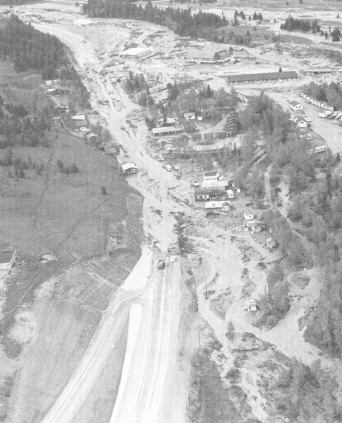
St. Mary’s Hotel Washout – Interior Department Survey
In the second week of June of 1964, the worst natural disaster in Montana’s recorded history turned once picturesque creeks into raging, mile-wide rivers. For the first time since Gibson Dam was built on the Sun River, water came pouring over its top. The huge reservoir, swollen by heavy snow melt and pounding rains, spilled its overflow down the face of the 200-foot-high barrier into the Sun. Dams, and railroads washed out, homes and ranches were swept away, and thirty people died. The area affected by the flooding amounted to “nearly thirty thousand square miles, or roughly 20 percent of the state.” – Montana The Magazine of Western History
When I began writing the love story that evolved into my recently released fantasy novel The Seeker, I could have used any era for my high country Glacier National Park, Montana, and my Gulf coast, Tate’s Hell Swamp, Florida scenes.
I chose to set the novel in 1964 because I wanted to capture the spirit of the times and to write about the times and places I knew. I was a summer hotel employee in 1964 when Montana’s worst flood tore apart the lives of a fair number of people and the infrastructure of a high percentage of the state.
Even today, a Internet search on “1964 Montana Flood” will turn up many pages of links.
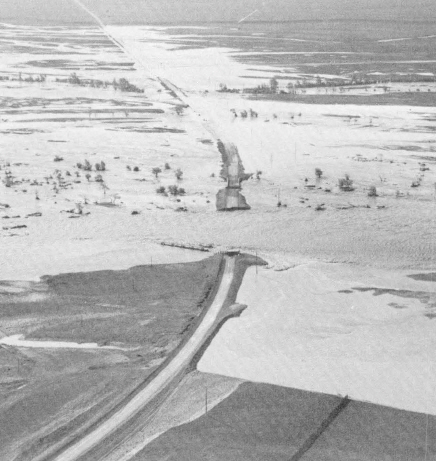
Highway 89 on the East Side – Interior Department Survey
A heavy snow pack combined with heavy rains was an overwhelming mix for creek and stream beds, reservoirs and dams. While Glacier appeared to fare better than areas outside the park, there was heavy property damage at Lake McDonald Lodge on the west side, St. Mary’s Lodge on Sun Road, and the highway leading into Many Glacier Hotel on the east side.
I worked at Many Glacier which was flooded, without water and power, and cut off from the outside world due to a road washout. My reactions and emotions at the time were complex, from “I can’t believe this is happening” to “how did I end up rescuing furniture in flooded lake level rooms?” to “I wonder how long it’s going to take to get all the mud out of the hotel.”
For me, the spirit of the times I wanted to capture in the Glacier Park portion of my story has to include this flood from a hotel employee’s perspective.
I don’t know what the hotel’s management knew about the extent of the flood while it was happening. As employees tasked with minimizing damage and then with clean up, we had no idea the entire park was impacted, much less a large portion of the state. Information was slow in coming in an era before 24-hour news channels, Internet resources and cell phones. Without diverting the novel into a story about the flood, I wanted to show—via my characters—what we felt at the time.
Excerpt from The Seeker
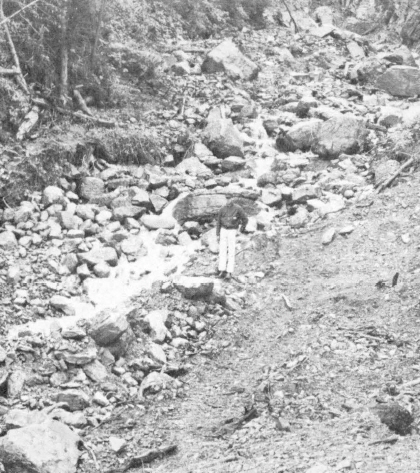
Moccasin Creek Debris – Many of the park’s creeks, trails, meadows and roads looked like this.
Before first light on the morning it began, Sam Kinton woke them early.
“The lake is into the hotel. Get your lazy asses out of dreamland, gentlemen.”
“Shit, there goes the season,” grumbled Al.
Al couldn’t find his “goddamn old tennis shoes.”
Sam was in the hallway again, hammering on doors. “This ain’t the prom you’re dressing for, don’t you know.”
They followed him down through the rain to the main door beneath the port cochere. Jed and James, the professional staff, were in the lobby already, haggard automatons, barely recognizable in old clothes, bathed in the unreal glow of flames from the stone fireplace. The power was out, the phones were out, the road was out, the water was out, except for the lake, which was a living creature in the hallway at the bottom of the stairwell.
David was in this hall with others of the skeleton crew who came to the hotel several weeks ago to shake out the winter cobwebs before opening day of the 1964 season. They rescued braided rugs, heavy when wet, and beds, dressers, mattresses, chests of drawers, pictures off the walls, the piano from the stage in the St. Moritz room. Jed wouldn’t allow anyone to work downstairs for more than a few minutes at a time because the water was cold. He ordered them upstairs to be wrapped up tight in blankets and force-fed coffee from the makeshift lobby kitchen. They were constructing history already, reports were coming in, well-intentioned and half true, that hotels, towns, roads, bridges, livestock, dams, railroad tracks, families whose faces they will see later in the newspapers, are out, down, broken, undercut, missing, rent, ruined, swept away.
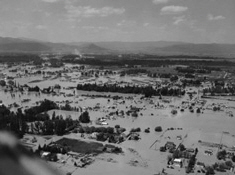
Neighborhood west of the park…a scene repeated in multiple towns
As June 8th flowed into June 9th and June 9th flowed into June 10th, a discovery was made, and that is that mortal men have no meaningful words left for describing the scope of this event. They already spent their words on small things. In a story headlined NATURE TURNS OUTLAW, a Missoulian reporter wrote, “Natural disaster brings a terror like the terror of a mob: destructive, terrifying, unpredictable, inexorable, and heartless.”
It came down to lists. Adjectives, acres flooded, bridges out, dams compromised, dollars in damages, head of cattle drowned, homes lost, miles of track torn away, miles of road destroyed, people killed or missing or homeless, power and phone lines down, rivers rising and falling, towns under water, visits by government officials.
The Hungry Horse News printed lists of names. The paper “would appreciate any further information.” David read the names again and again: he knew so many of them.
Sam kept a list of towns. Nobody knew where he got his information, though it was probably KOFI and KGEZ radio in Kalispell, and random reports. He posted the lists behind the lobby information desk and made entries with a black laundry marker every hour.
“It reads like a list of war dead, don’t you know,” he told David.
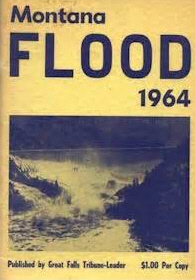
Many of us purchased copies of this collection of news pictures.
St. Mary, East Glacier, West Glacier, Pendroy, Simms, Sun River, Fort Shaw, Fairfield, Big Fork, Whitefish, Lowery, Great Falls, Augusta, Choteau, Loma, Browning, Dupuyer, Babb, Ft. Benton, Kalispell, Essex, Nyack, Columbia Falls, Polebridge, Missoula, Deer Lodge, Plains, Butte, Conrad, Lincoln, Shelby.
An alphabet soup of agencies and organizations was mobilized. ASC, BIA, BLM, BPR, BUREC, DHEW, FEC, FHA, NFS, NPS, MPC, OEP, PP&L, SBA, USDA, in addition to the army, air force, and Red Cross.
Anecdotes served when the lists grew old.
Prior to the flood, the BIA was studying drought conditions on the Blackfeet Indian Reservation. After the flood, the Indians didn’t lose their wry sense of humor. They told the BIA rep that his medicine was too strong.
A man found an overturned boat in his back yard; a woman found a bridge. Owners please claim.
Grateful that his son who was vacationing in the mountains was unharmed, a Louisiana man sent a check to help pay for the flood damage.
The guys working on a dike along the Clark Fork down in Missoula were shooting rattlesnakes by the dozen.
A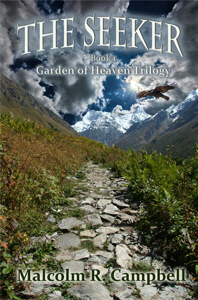 GNRR lineman slipped off a pole into the rising waters of the Flathead over in Bad Rock Canyon and was rescued through the combined efforts of a fellow lineman, a boat crew, and an air force helicopter.
GNRR lineman slipped off a pole into the rising waters of the Flathead over in Bad Rock Canyon and was rescued through the combined efforts of a fellow lineman, a boat crew, and an air force helicopter.
A truck on Central Avenue attempted to outrun the flooding Sun River and was abandoned when the water climbed up to the bottom of the windshield.
Trees shot through a bridge on the west side of the divide like giant arrows.
Near Plains, an Associated Press photographer took a picture of a sopping wet bunny floating down the river on a plank of wood.
The lake level rooms in the hotel were an explosion of mud. Cleanup and repair crews worked past meals, worked past sleep, and honed the stories they will tell the employees who were been put up at other hotels until the roads were open.
-
Many Glacier Hotel managed, with a lot of employee effort and road crew effort, to open on time with a convention. Other hotels opened more slowly, with some facilities that were ultimately condemned and torn down. Hiking and other activities were impacted throughout the park for the summer season. The news from outside the park was worse.
Fiction, I think, gives writers another way of expressing what a disaster is like as characters are forced to cope with the situation. I hope readers of The Seeker will, at the very least, get a sense of the 1964 flood within the park.


May 3, 2013
Review: ‘The Best of Glacier National Park,’ by Alan Leftridge
The Best of Glacier National Park, by Alan Leftridge, Farcountry Press (April 30, 2013), 136 pages, photographs, maps, resources
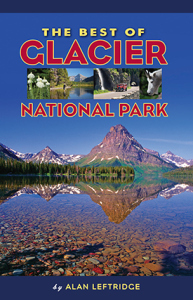 “We’re here! What should we do, what is there to see?” In the preface to his practical and well-illustrated Glacier National Park guidebook, Alan Leftridge writes that as a park ranger, he often heard those questions from excited visitors who “wanted to start making memories.”
“We’re here! What should we do, what is there to see?” In the preface to his practical and well-illustrated Glacier National Park guidebook, Alan Leftridge writes that as a park ranger, he often heard those questions from excited visitors who “wanted to start making memories.”
Many of Glacier’s two million annual visitors travel a long way to reach northwestern Montana, and when they arrive, they are not only in awe of the scenery but of the scope of the prospective activities that await them in a 1,012,837-acre preserve with 762 lakes and 745.6 miles of trails. While Glacier is best experienced without hurry or stress, the economics of vacation travel make it necessary for visitors to maximize their time in the park.
The Best of Glacier National Park highlights, as Leftridge puts it, the park’s “iconic features.” The book begins with an overview of park facts, geology, and cultural history. This is followed by twenty-six “best of” chapters describing everything from scenic drives, picnic areas and nature trails to wild flowers, birds and photography opportunities.
Each chapter includes a map, color photographs and clearly marked headings and subheadings that make the information easy to find. This book is meant to be used as a quick and easy reference whether you are stopped at an overlook on the Going-to-the-Sun Road or standing in a subalpine fir forest on the Swiftcurrent Nature Trail. The hiking sections, which are broken down into nature trails, day hikes and backpack trips, include directions and special features you’ll want to see and photograph.
Glacier’s rangers, naturalists, boat crews and saddle tour operators are probably asked more questions about the park’s flora and fauna than anything else. The “Best Wildlife” chapter includes a mammal checklist and tells you where to find marmots, deer, elk, bighorn sheep, moose and bears. The book includes appropriate warnings about Grizzly bears, suggesting that they be observed at a distance. “Best Birds” highlights ospreys, eagles and ptarmigans, among others.
Naturally, “Best Wildflowers” begins with beargrass. Leftridge notes that “It is a myth that bears rely on this lily to satisfy their diet. If you see beargrass’ tall stalks with missing flower heads, know that other animals, including rodents, elk and bighorn sheep, nibbled here.”
According to the National Park Service, there are 1,400 plant species in Glacier. While “best” is a subjective term, this guidebook focuses on such popular and showy wildflowers as the Glacier Lily, Indian Paintbrush, Lupine and other visitor favorites.
Naturalist John Muir said Glacier National Park includes the “the best care-killing scenery on the continent” and suggested that visitors “Give a month at least to this precious reserve. The time will not be taken from the sum of your life. Instead…it will make you truly immortal.”
Whether you have a month, a week or a only few days for the high country known as the Crown of the Continent, The Best of Glacier National Park is an excellent all-purpose, general guidebook for discovering everything to do and see when faced with thirty-seven named glaciers, 175 mountains, and 151 maintained trails of waiting memories.
A former Many Glacier Hotel summer employee, Malcolm R. Campbell is the author of nonfiction and fiction with a Glacier Park focus, including Bears; Where They Fought: Life in Glacier Park’s Swiftcurrent Valley and his recently released contemporary fantasy The Seeker.


April 30, 2013
Miscellany: New, upcoming, and around the Net
Here are a few updates about one thing and another, this and that, and things from that drawer most families have the kitchen that contains stuff that didn’t end up some place else.
New
 I’m happy to announce that my three-story Kindle set, Emily’s Stories, is now available as an audio book. The stories feature a fourteen-year-old girl who talks to birds and ghosts and, just possibly, tinkers a little bit with reality. That’s what I would expect from a curious, sharp and savvy young lady. Personally, it was strange (in a good way) to hear my words being read back to me by narrator Kelley Hazen. Kelley also narrates my Vanilla Heart Publishing colleague Marie Hampton’s
Hunting Heartbreak
. Stay tuned for more audio books from VHP later this year. It’s an exciting new way to tell you our stories.
I’m happy to announce that my three-story Kindle set, Emily’s Stories, is now available as an audio book. The stories feature a fourteen-year-old girl who talks to birds and ghosts and, just possibly, tinkers a little bit with reality. That’s what I would expect from a curious, sharp and savvy young lady. Personally, it was strange (in a good way) to hear my words being read back to me by narrator Kelley Hazen. Kelley also narrates my Vanilla Heart Publishing colleague Marie Hampton’s
Hunting Heartbreak
. Stay tuned for more audio books from VHP later this year. It’s an exciting new way to tell you our stories.Upcoming
I’m looking forward to posting reviews of two new books about Glacier National Park in late May, Best of Glacier and Glacier Park Lodge. This year marks the 100th anniversary of the famous lodge built by the former Great Northern Railway on the edge of the park. You can still get there by train via AMTRAK’s Empire Builder.

Author Dianne Marenco Salerni (“We Hear the Dead” and her upcoming “The Caged Graves”) will be hear in two weeks with a spooky guest post. With today’s zombie fad, we usually hear about protecting the living from the dead. However, there have been times when the dead needed to be protected from the living. It’s a great post with some wonderful photographs. Dianne and I used to contribute book reviews to the same review site, so it’s doubly fun to see her latest novels coming out and showing up with glowing reader responses on similar sites.
Around the Net
You’ll find some of my favorite places in the blogroll. In my search for author and publishing news for my “Book Bits” posts on my Sun Singer’s Travels blog, I look at a great many blogs and sites each week. But here are some posts I wanted to share (including one of mine own) outside the realm of reviews and author news:
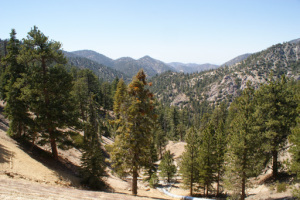
Smoky Zeidel photo
My friend and colleague at Vanilla Heart Publishing, Smoky Zeidel (“The Storyteller’s Bracelet”), has been blogging about the the beauty of the California coast. I haven’t been back to the state where I was born for many years, so I’m contenting myself to read about it in In Search of the Pacific Crest Trail. This is the second in a two-part posting. Smoky is known as the Earth Mage for good reason.
Since I have blogged here in the past about the hero’s journey, I see a lot of visitors stopping by after having searched for more information. I would like to suggest The ongoing series of posts on C. LaVielle’s Book Jacket Blog about the hero’s journey and the Major Arcana from the Tarot deck. The deck’s Major Arcana, when followed in numerical order, are a representation of not only the hero’s journey, but the seeker’s journey. Yesterday’s post is The Sun, Part I.
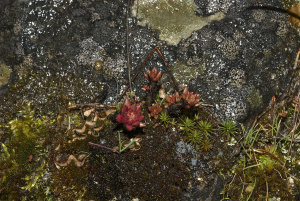
Montucky photo
My Montana friend “Montucky” has been running his Montana Outdoors blog for some years now and has gathered over time a surprising variety of high country photographs. He spends a lot of time on trails and forest service roads and always has his camera. You’ll see scenics, river pictures, and hundreds of wildflowers. Most recently, he showed us the beauty of Lichens and moss. Montucky makes frequent posts, and I have found a lot of serenity in stopping by his blog of late to see the last snowfalls and the first spring flowers. His blog is almost as good as flying out to Montana, though considerably less expensive! (However, as soon as Hollywood calls and makes me an offer for this book or that, I’m buying a plane ticket or a suite on the Empire Builder.)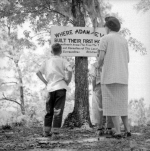
Florida Memory photo
In my recent post on my Sun Singer’s Travels weblog, I couldn’t resist placing my characters in Florida’s Garden of Eden, I continue a series of novel-location-essays focused on my new contemporary fantasy novel The Seeker. In the 1960s when the novel is set, the Florida Panhandle preserve now called the Apalachicola Bluffs and Ravines was touted as being the location of the Biblical Garden of Eden. There were signs all over the place, including one that said “Here Adam and Eve Built Their First Home.” The Garden of Eden trail is still there, but a lot of the former rhetoric and publicity about Arks and gopher wood has faded into the past. The habitat is exceptionally rare no matter what you believe about its past. I habitually use many real settings in my novels and short stories as a way of contrasting fantasy and reality, adding depth to my locations, and (in a small way) keeping a bit of local history alive.


April 25, 2013
A dark street in Tallahassee many years ago
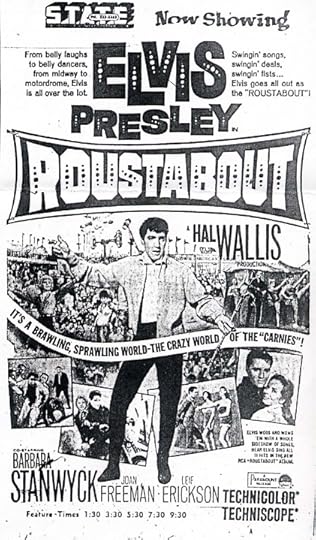 My recently released contemporary fantasy novel, The Seeker, tangles its characters up in love, magic and destiny. Since the novel is set in the 1960s, I ordered a copy of the Tallahassee, Florida newspaper to see what movies were playing on Thanksgiving, 1964, when protagonist David Ward uses lucid dreaming to cheat fate on a night his girl friend Anne is being stalked on her way back to the campus from the theater.
My recently released contemporary fantasy novel, The Seeker, tangles its characters up in love, magic and destiny. Since the novel is set in the 1960s, I ordered a copy of the Tallahassee, Florida newspaper to see what movies were playing on Thanksgiving, 1964, when protagonist David Ward uses lucid dreaming to cheat fate on a night his girl friend Anne is being stalked on her way back to the campus from the theater.
The long-gone Florida and State Theaters were showing “Send Me No Flowers,” with Rock Hudson and Doris Day, and “Roustabout,” with Elvis Presley. Anne sees the Doris Day movie with friends and starts walking back to the college (Florida State University). David hopes she’ll duck inside the State Theater to be safe from the stalker.
Excerpt from David’s Dream
David stood at the corner of College and Monroe in Tallahassee, Florida. To the north: the primary downtown business area, including the Florida Theater which was showing “Send Me No Flowers” with Rock Hudson and Doris Day. To the west: the State Theater presented Elvis Presley in “Roustabout.” Farther west, College Avenue grew dark as it approached the university and the night beyond.
He dreamt and he knew he was dreaming. The sounds of the city were clear and, so, too, the conversations of the people on the sidewalk between the theaters, and some of their thoughts as well, expectations of popcorn, concerns about recent exams and questions about who they would see this evening and whom they would be with. Unlike his standard dreams, David walked unseen and unheard amongst the students and family groups and scattered grandparents like a ghost.
Yes, he could follow Anne or Nick or even RC without their knowledge. But it danger threatened, he could shout no warnings nor take any action.
He walked north and found Anne in front of the Florida Theater with Marta and Karen. Karen and Marta wanted to go out to a hamburger place with three students in a double-parked car. Anne didn’t.
“I’m fine, just a bit of a headache,” she said.
“We should stay together,” said Marta.
Staying together is smothering me.
“The streets are crowded,” said Anne. “It’s a safe night for walking back to the dorm.”
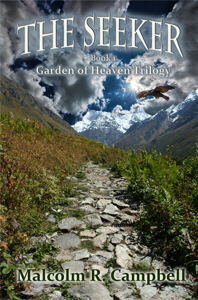 The car pulled away and Anne walked toward College Avenue with David, though she didn’t know it. Her hair was in a ponytail and she wore a light blue sweater against the gentle chill of the evening. The rivers of people coming and going from the theaters converged at College Avenue with cars driven by dates, friends and parents in a clamor of horns and shouted greetings.
The car pulled away and Anne walked toward College Avenue with David, though she didn’t know it. Her hair was in a ponytail and she wore a light blue sweater against the gentle chill of the evening. The rivers of people coming and going from the theaters converged at College Avenue with cars driven by dates, friends and parents in a clamor of horns and shouted greetings.
Very few people are walking toward the campus. The hill is dark past Schwobilt’s Department Store and the Baptist Church. Not good. Somebody’s whistling off key across the street. Maybe I should see “Roustabout.” Afterwards, perhaps a group of students will head back toward from front gate.
David also heard the whistling, but he saw no one there, heard no thoughts to follow within the rag-tag, repetitive “Lord, I Want to be a Christian” that swirled, like an ill wind, around the YMCA building and several small clothing shops across the street.
Anne hovered hear the ticket booth within the safe glow of light beneath the marquee.
“Go inside, Anne,” he said. While she didn’t hear him, David heard her think of him, wishing she had invited him down for Thanksgiving. The young woman in the glass booth looked up, smiled.
David would hate Roustabout, but at least he would be here.
“I’m thinking about it,” said Anne.
This is silly.

College Avenue in 1964 looking from FSU toward downtown
She looked at the movie posters in the glass cases. Glanced across the street, and then walked away, comforted—he could tell—by the elderly couple standing in front of the jewelry store. She heard them talking about wedding rings and didn’t want to intrude. The Big Bend Book store caught her eye. She tried the door.
It was locked.
Why are they closed so early? A good night for strolling, movies and bookstores. I Could pick up a copy of “Herzog” even though Marta thinks it’s strange.
Except for the wedding ring couple and the two girls looking at clothes in the Schwobilt’s window, people were disappearing into the night. The lady in the ticket booth turned off her light after putting up a sold out sign. Anne stood in front of the bookstore looking at the stacked up bestsellers for ten minutes. David saw a few tempting titles, but then, he wasn’t really there.
But he who whistled that song was there.
He’s watching me.
David stared past the clothing shops toward Monroe Street. Nobody.
The notes were louder now and more off key, rather like the sound from a poorly made slide whistle prize out of a cereal box.
“Anne, go inside the theater.”
In my heart, in my heart, in my heart. Damned mocking notes, it’s “Nick of Time” Nick looking for girls to pray with him and then what, a private communion?
The song unsettled her. She hurried across Adams Street and tried the locked door at Schwobilt’s as the notes of the song grew closer, then farther away; there were no police cars in sight, no wedding ring couple, and no RC.
The dorm will be safe. No men in the hall.
David walked through every shadow and looked around all the corners, but the tune was everywhere at once.
-
I hope you enjoy the novel. You’ll find it on Kindle (and soon on Nook) as well as in other e-book formats ar OmniLit and Smashwords for only $4.99. It’s also available in trade paperback.


April 24, 2013
Book Review: ‘Bitter Orange’ by Marshall Moore
 Marshall Moore follows his collection of enigmatic and delightfully twisted short stories, Infernal Republic, with an equally inventive novel about a character we can’t always see. Notice how protagonist Seth Harrington is already fading away on the book’s cover.
Marshall Moore follows his collection of enigmatic and delightfully twisted short stories, Infernal Republic, with an equally inventive novel about a character we can’t always see. Notice how protagonist Seth Harrington is already fading away on the book’s cover.
If Bitter Orange were a feature film showing at your local theater, a sign on the door would say: ABSOLUTELY NO ONE ADMITTED DURING THE LAST 15 MINUTES. The why of things doesn’t appear until the final pages and it’s well worth the wait.
The problem Seth Harrington thinks he has isn’t the worst problem he has. Personally impacted by 9/11, Harrington has allowed his days and nights to take on an out-of-focus aimless quality as though he isn’t engaged in his life. In spite of a fling with Elizabeth in Spain, he can’t connect with people, either because he isn’t sure of what, if anything, he wants or because others aren’t seeing him as he is.
Others not seeing him is the problem he thinks he has. By fits and starts, he is becoming invisible—literally. But unlike the daring-do characters out of comic books and high fantasy, Harrington not only can’t control his growing ability, he doesn’t seem inclined to use it to save the world or fight crime. In fact, he first uses it to steal a bottle of wine from a convenience store.
Other than his aimlessness, Harrington’s a likeable enough everyman trying to negotiate the world while getting past bitter memories and making sense of the seemingly random chaos of his daily life. In Spain, after telling Seth that Seville Oranges are bitter and bullfights are cruel, Elizabeth says, “So we came all this way for bitter oranges and cruelty to animals. And we meet here instead of back home in the States. What does that say about us?”
Back in San Francisco, Elizabeth—who becomes Seth’s tattoo artist of choice because she’s very good—wants to remain as important to him as she ever-so-briefly was in Spain. While Seth is, or potentially is, more attracted to his roommate Sang-hee (even Elizabeth begrudgingly sees it), he cannot seem to embrace the life he prefers. He speculates about just what that says about him.
As the invisibility problem becomes more complex, Seth travels to Portland and Las Vegas to try and find himself. He notes that the people in those towns can’t see him either. He feels bad taking advantage of that fact.
Marshall Moore tells an inventive story, one with prose as likeable as his protagonist, though some readers may want a more highly focused plot. Moore keeps both the reader and his protagonist guessing about just how and why a man becomes invisible and whether the problem Harrington thinks he has is literal or figurative.
The solution to the problem provides a fitting climax to a well written, fanciful tale. Poor Seth: he didn’t see it coming.
Malcolm R. Campbell is the author of contemporary fantasy novels, including “The Seeker,” released this month by Vanilla Heart Publishing.


April 23, 2013
Budget Falls Short for Parks; Glacier Plowing Facilitated by Donation
from the National Parks and Conservation Association
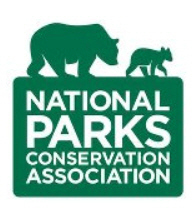 Background: The release of President Obama’s 2014 budget April 10 proposes that the National Park Service budget would increase by $56.6 million over FY12, but the increase is partially offset by programmatic decreases to park base operations. The proposal includes important investments but also provides a reduction of nearly a hundred staff in park operations.
Background: The release of President Obama’s 2014 budget April 10 proposes that the National Park Service budget would increase by $56.6 million over FY12, but the increase is partially offset by programmatic decreases to park base operations. The proposal includes important investments but also provides a reduction of nearly a hundred staff in park operations.
“The National Park Service is experiencing deep impacts from the sequester and other continued reductions. This year will be the most challenging in some time for national park superintendents who will have fewer rangers and smaller budgets to manage each park from Yellowstone to Acadia. Funding the operations of the National Park Service needs to be more of a priority than it has been to date. We’re pleased that the President recognizes the need to reverse the mindless sequester, but it will take more than that recognition to address the reality facing national parks.”
“The sequester has already cut more than $130 million from the National Park Service budget, forcing places like Yellowstone, Acadia, Independence Hall, and Cape Cod National Seashore to delay seasonal openings, close visitor centers, picnic areas, and campgrounds, and eliminate ranger positions that are critical to protecting endangered species and historic buildings, as well as greeting park visitors and school groups. Further cuts will only impair the national park experience.
“National parks draw international tourists and are economic engines that support more than $30 billion in spending and more than a quarter million jobs. Yet they suffer from an annual operating shortfall exceeding half a billion dollars and a maintenance backlog of many billions more. And in today’s dollars, the Park Service budget has now declined by more than 20 percent over the last decade.
billion in spending and more than a quarter million jobs. Yet they suffer from an annual operating shortfall exceeding half a billion dollars and a maintenance backlog of many billions more. And in today’s dollars, the Park Service budget has now declined by more than 20 percent over the last decade.
“We need the President and Congress to make sure America’s national parks are open and well-staffed and nothing in this budget provides us with any confidence that will happen. Our national parks are not just great destinations to visit, they are our national treasures that should be treated with honor. They drive the economy for many rural and urban communities. The severe under-funding of our most prized places needs to be reversed. We hope to work with the President and Congress as they debate how to repair a failed federal budgeting process to better address the true causes of the nation’s deficits and better serve our national parks and the American people.”
-
Glacier National Park
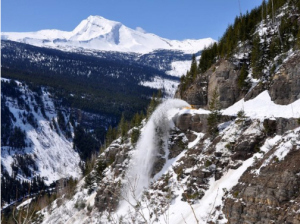
NPS Glacier Photo
According to NPS Glacier, “The park’s base budget of approximately $13.5 million was reduced by $682,000. The park must absorb that cut in the remaining months of this fiscal year that ends September 30.”
Due to Congress’ failure to adequately support the parks, budgets were already far short of basic infrastructure and operating requirements. Cutting funding further through a failure of the federal budgetary process adds insult to injury. Inasmuch as jobs and tourism income in areas with parks benefit greatly, any reduction of park hours, season dates, and attractions impacts more than the parks themselves.
Fortunately, a donation to NPS Glacier by the Glacier National Park Conservancy has kept budget cuts from delaying the spring plowing of the Going to the Sun Road. However, visitors will see impacts elsewhere:
Delayed trail access and decreased trail maintenance,
Reduction in native plant restoration,
Reduced shoulder-season access to campgrounds and visitor centers,
Decrease in entrance station hours,
Less maintenance work on park facilities, roads and utility systems,
Limited and delayed emergency response outside the core season,
Decreased educational programming and ranger-led activities,
Less back-country volunteer coordination,
Reduction of revenue from impacted campgrounds, and
Reduced partner financial aid assisting interpretive programs resulting from loss of revenue of partner bookstores in park.
What a pity.


April 20, 2013
Announcing a new contemporary fantasy about love and destiny
The Seeker (Garden of Heaven Trilogy), by Malcolm R. Campbell, Vanilla Heart Publishing (April 2013), 224 pages, e-book and trade paperback, contemporary fantasy.
Do the rules of life allow us to save ourselves and our loved ones by fighting or running, but not with precognition and magic? Some people believe magic is a way of “getting away with something” that the Universe doesn’t intend for us to avoid, much less survive.
In my new contemporary fantasy, The Seeker, released by Vanilla Heart Publishing this month, lovers David Ward and Anne Hill learn there are consequences to confronting predators and gods.
David knows magic. He learns it from his grandmother, Raven, Eagle and Black Horse. He finds visions in the mountains and wants to expand upon them by climbing the highest peaks on the planet. Yet, as his utilitarian grandfather Jayee sees it, such things are best left alone because the world does not believe in magic and hates people who do.
David and Anne meet when they’re hired as summer workers at a Glacier National Park resort hotel. David grows up on a sheep ranch and loves the Rocky Mountains. Anne lives with her aunt in Florida and has become attuned to the Gulf Coast barrier islands and swamps. Like many others who find each other at a beautiful or exotic location, they believe their intense summer romance will last forever.
From the Publisher:
David Ward develops an enduring love of mountains and the magic of the high country secrets he learns from his medicine woman grandmother growing up on a Montana ranch. A vision quest at the summit of a sacred mountain opens his eyes to his future while blinding him to the details.
David meets Anne Hill, another seasonal employee at a mountain hotel during the summer of Glacier National Park’s worst flood. Out of the ravages of water, they spend an idyllic summer in the beautiful Garden of Heaven. Together in their hearts, each returns to their college lives.
When Anne is confronted by a stalker on a dark street in her Florida college town, the magic David uses in an attempt to save her changes her, and leads them both into the dark territory of misunderstandings and the blood of Tate’s Hell Swamp.
Excerpt from the Novel:
“After they finished the dinner they prepared together, after the meadowlarks’ piccolo-sharp whistles enfolded into the raspy songs of wind and creek, after darkness flowed up out of the cottonwoods, after they watched the stars materialize in the sky above the circle of box elders, after Anne’s Christian Brothers Napa Rose wine connected them to the light of the waxing crescent moon, they fetched an old horse blanket and a kerosene lantern and walked arm in arm up the bright path to the chokecherry tree. David hung the lantern on a limb below the ripe fruit while Anne flung out the blanket. The pale yellow light spun a cocoon within the night, extending outward just shy of the altar upon which the sweet lamb was slaughtered in the eagle’s dawn raid eleven years ago.
“Anne stepped into the center of the blanket and lifted her arms above her head in a long, slow, cat-like stretch. Her figure was fine and young, and when her hair caught the light, the world stopped, cloaking the rising whispers of his blood within an immense silence, suspended and potent. She looked at him over her shoulder, eyes sweeping his body. Then they looked past each other and waited for signs.”
The Trilogy
The Seeker is the first novel in the Garden of Heaven Trilogy. Book two, The Sailor will be released this summer. Book three, The Betrayed is due out this fall. The Seeker is available on Amazon in trade paperback and on Kindle. The e-book edition is available on Smashwords and on OmniLit. The novel will also be available on Nook in the near future.
While the novels in this trilogy are definitely fiction, they were inspired by my experiences growing up along the Florida Gulf Coast and working as a bellman at a Glacier National Park hotel during the Montana flood of 1964. David’s navy experiences in The Sailor, grew out of my tour of duty aboard an aircraft carrier, and his work as a college teacher in The Betrayed, is a highly “ramped-up” version of my years as a journalism instructor.
I hope you enjoy the series.
–Malcolm


April 11, 2013
Lawn Mowing for the First Time This Year
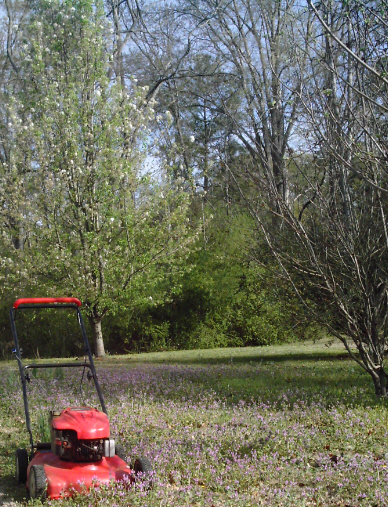 My wife tells me that if we’re going to hike in the mountains late in the summer, we need to start getting in shape now. Walking from our house to the main street and back again is two miles, round trip. After mowing the lawn today for the first time this year, I see it’s time to star walking that walk.
My wife tells me that if we’re going to hike in the mountains late in the summer, we need to start getting in shape now. Walking from our house to the main street and back again is two miles, round trip. After mowing the lawn today for the first time this year, I see it’s time to star walking that walk.
Every muscle aches as though I spent the day playing football rather than walking behind our relatively light-weight rotary lawn mower. The first-of-spring grass-and-weed combination was almost too high for the mower, so my excuse is that things ache because I had to do more pushing.
I can tell you from experience, the first adventure in lawn mowing gets harder every year. Goodness knows what a five mile hike at 5,000 feet of elevation would have been like.
When I lived in Florida, I went to a college summer session at the University of Colorado in Boulder. It took me weeks to get used to the elevation. When I came back, though, I felt like Superman in my Gulf Coast World.
I’m hoping that means that when we get back from the mountains this year, I’ll feel half my age while mowing the lawn for the last time before winter, such as it is, in Georgia.
Malcolm R. Campbell’s contemporary fantasies, “The Sun Singer” and “Sarabande,” are set in the mountains of Glacier National Park, Montana

Read it now on your Kindle


April 9, 2013
A notion about the gospel of your life
“Quests are personal journeys, and every step is taken alone.” –Deepak Chopra, The Way of the Wizard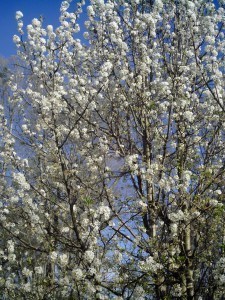 If there is a subtle message in my novel The Sun Singer it is this: the great words of the great masters about our life’s journeys are—at best—hints. The ideas from the rest of us are mere notions.
If there is a subtle message in my novel The Sun Singer it is this: the great words of the great masters about our life’s journeys are—at best—hints. The ideas from the rest of us are mere notions.
The words of the masters may suggest to us that there are other worlds and other levels of consciousness and other levels of awareness. And they may also suggest techniques that will help us find the doorways, paths, enlightenments, and awakenings we desire.
After that, the great words are lies insofar as our journeys are concerned. The great masters’ great words describe the great masters’ journeys. As such, they are the gospels of the great masters’ experience.
My journey is mine alone. Your journey is yours alone. Neither journey can be undertaken by following in the great masters’ footsteps or by concretizing the great masters’ thoughts into a recipe book. We alone know the terrain upon which we’re walking and when all is said and done, the great masters’ view from the mountaintop will never be ours. Attempting to see what they saw creates blindness.
I am continuously writing my story just as you alone will write the gospel of your life, and it will be based on your awareness of your own experience. Nothing else matters; nothing else exists. You and I are both the creators of our paths and the ones who walk upon them enjoying the scenery and surprising ourselves with the wonders we encounter.
From the Archives: This post was first published in my blog in 2005.

Read it now on your Kindle


April 5, 2013
Blog Traffic is Often a Puzzlement
I appreciate those of you who regularly stop by, read, leave comments, and subscribe. Without Google Analytics, I often wonder where some of the other blog traffic comes from.
Suddenly, a two-year-old review of “Labyrinth” by Kate Mosse gets 35 viewers. Last week, an old article called “Branding at Sea” about the USS Ranger was ranked as a top post. Sometimes I can figure out these puzzles. A news story prompts a sudden search. An author comes out with a new book, leading people here to reviews of earlier books. But most of the time, I can’t track down the why of sudden bursts of traffic to old posts.
I often post news and articles about Glacier National Park, the hero’s journey, and the heroine’s journey, so I’m not too surprised to see search terms listed on my dashboard from readers looking for more information. My new novel “The Seeker” will be coming out soon. That means more fantasy and magical realism posts. Later this year, I plan to visit Glacier National Park, so you’re pretty much guaranteed to see more posts about Swiftcurrent Valley and Many Glacier Hotel.
Coming soon, is a very interesting guest post from author Dianne K. Salerni (“We Hear the Dead”). If I told you the subject, you’d probably think I was making it up. I’m already wondering what kind of search terms will lead people to that post.
I’ll have another book review to post in several weeks. I liked this author’s collection of short stories. It’s fun seeing him focus his talents on a novel. When I post reviews, I often see more traffic for the older reviews.
If you don’t find what you’re looking for here, check out my Magic Moments blog for more posts about fantasy, the natural world and sometimes a bit of Zen. Several times a week, I post links to book and author news, writing tips, and book reviews in “Book Bits” which appears on Sun Singer’s Travels.
The traffic on the older posts on those blogs is also a puzzlement, but I figure the Universe, Google and the Internet in general pretty much know who needs to stop by for a visit. When I start following links, I often end up at sites and blogs I’ve never heard of and find that it’s almost as though I was destined to go to them and read a specific article or post that somehow applies to whatever I’m doing.
Even if Google Analytics were available for WordPress blogs, I’m not sure it could figure out the logic of traffic that the fates send to one place or another.




